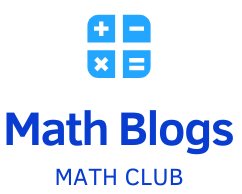The demand for data analysis will keep on growing in 2025 in different industries and mathematics software remains a crucial part of businesses, researchers and learners. They are tools that play essential roles in organizing, analyzing and interpreting data so that the users can get useful findings accurately and effectively. From simple platforms suitable for beginners to intricate ones meant for experts, there is an array of math software designed for data analysis in 2025.
The Growing Importance of Math Software in Data Analysis
As information becomes indispensable, math software has transformed to address the challenges posed by vast amounts of data. Such utilities allow users to handle everything from relatively basic statistical analyses up to complicated machine learning algorithms. Right softwares may be used if you are doing academic research or trying to optimize business processes or even develop prediction models. These applications could therefore offset time wastage during your work flow as well as improve upon accuracy when generating conclusions about a particular problem being investigated or predicted via some model.
Math Software in 2025: Best Options
Similarly, MATLAB is a standout tool for analyzing data due to its robustness and versatility. MATLAB is often considered as the most preferred software for academic and industrial users due to its enhanced features in numerical computation, visualization as well as algorithm development. High-level analysts can use it because of its seamless integration with machine-learning libraries and capability to manage large datasets.
The other popular software program is Python that comes with modules such as Numpy, Pandas, and Scipy. Apart from being open source, Python has a large community of developers who provide support, making it a favorite choice among many users since they like flexibility and customization. Matplotlib and Seaborn are additional visualization tools that allow Python users to create efficient yet eye-catching workflows for data analysis purposes.
R, on the other hand, is an influential language-based software environment for statistical computing and graphics mainly used by businesses engaged in predictive analytics. It is recognized for containing various statistical techniques thereby making it widely employed in various fields such as finance, healthcare among others including marketing. Its incorporation through RStudio also helps beginners navigate this platform even if they have minimum coding skills required at entry level programming jobs due to its user-friendly interface.
Microsoft Excel, a timeless classic, has data analysis capabilities that are useful for small- to medium-sized projects. It is reliable for an instant analysis with its user-friendly interface and characteristics such as pivot tables, data visualization and in-built formulas. The 2025 update also adds modern functionalities and cloud based integration thereby making it more relevant in the field of data analysis.
Emerging Trends in Data Analysis Software
Math software has been greatly influenced by the emergence of artificial intelligence (AI) and machine learning (ML). For example, tools like TensorFlow and PyTorch were originally meant for machine learning but are now being used more widely in data analysis purposes. This allows users to create predictive models, automate repetitive tasks, as well as identify trends within data with unprecedented precision.
Another emerging trend is the integration of math software with the cloud computing. Examples include Google Colab and Microsoft Azure Machine Learning which have provided platforms where users access powerful computation resources online without having to own expensive hardware thus democratizing it. In this way smaller organizations and individuals can perform high level computations too.
Simplicity and Convenience
The greatest software for maths analysis in 2025 also emphasizes user-friendliness. These days, a lot of platforms have easy-to-use graphical interfaces, drag-and-drop features, and guided workflows that simplify the tasks that are complex. That means that tools such as Tableau and Power BI deliver interactive dashboards plus real-time analytics suitable for both beginners as well as experts.
Moreover, tutorials, templates, and community forums have been included to enable users to adapt fast to new software. This prioritization on accessibility has opened up data analysis for non-technical users who were previously excluded from it contributing to a culture of data-driven decision making in all sectors.
Application across Various Industries
Mathematical applications in various industries include some form of data analysis. In healthcare for example these tools aid in patient data analysis aimed at finding patterns and improving treatment outcomes. For finance they also help in portfolio optimization risk assessment and fraud detection. The manufacturing sector depends on analytic software to optimize supply chains supervise quality control processes predict equipment breakdowns.
Additionally, education institutions utilize maths software when teaching data analysis techniques with an aim of preparing the learner for jobs in a world of high volumes of information. These programs are even more vital than ever; hence integrating them into curricula is necessary since students can solve practical issues using Wolfram Mathematica or SAS among others.
Choosing Math Software
To select the right math software for data analysis, consider your own needs and your proficiency level in the field. Novices should choose those that are easy to use and have ‘walk-throughs’ while specialists may opt for more advanced options with customizable features. Moreover, the cost of software, scalability and its compatibility with an existing system can also impact on such selections.
The Future of Math Software for Data Analytics
Looking into the future, there is still room for improvement regarding math software used for data analytics. Breakthroughs in quantum computing can increase data processing speeds making it possible to analyze data that was previously considered unmanageable. Similarly, integration of augmented reality (AR) and virtual reality (VR) technologies could facilitate fresh means of perceiving information through immersive displays thereby improving sense-making and decision-making processes.
In conclusion, by 2025 there will be numerous math software applications specifically designed to provide different levels of expertise. From well-known tools like MATLAB or R to nascent AI or cloud supported ones; these solutions give users effective ways of leveraging data. By selecting appropriate software applications people can unlock unexplored potential that drive innovations as well as success even in an increasingly data-driven world.




